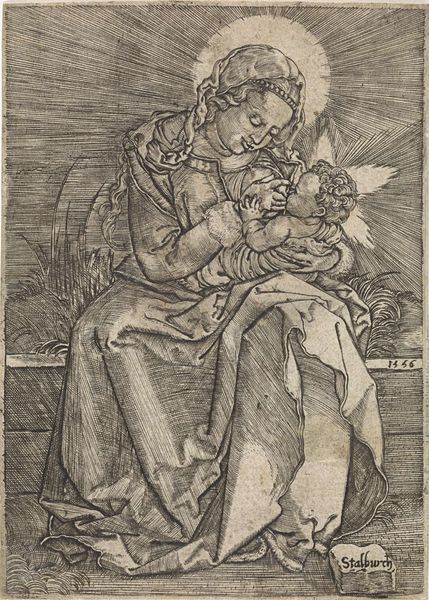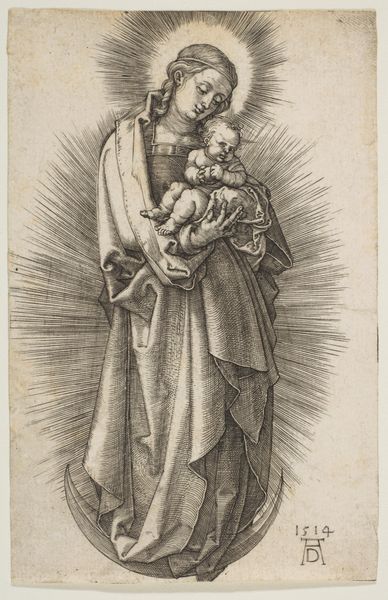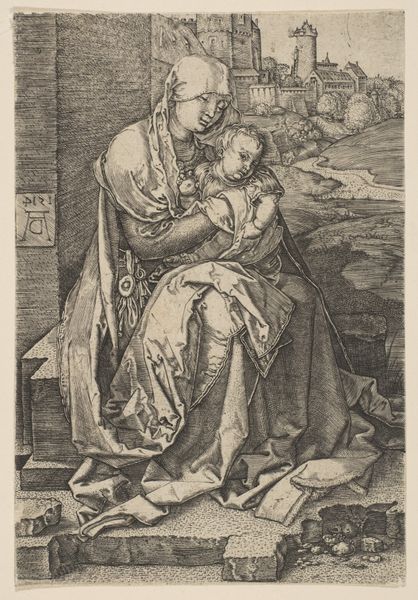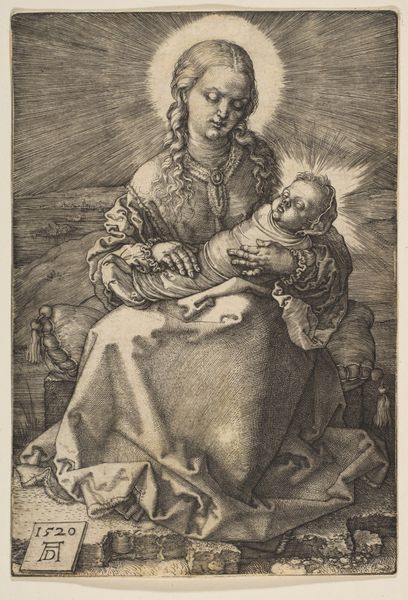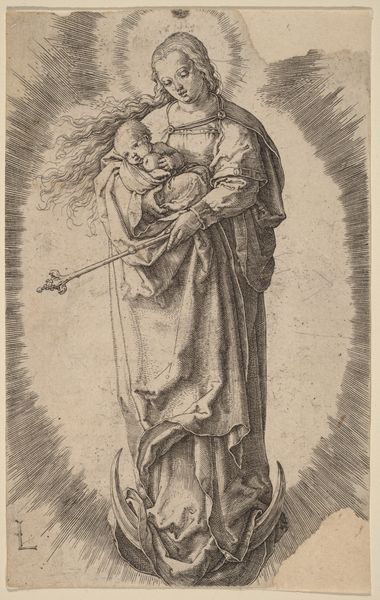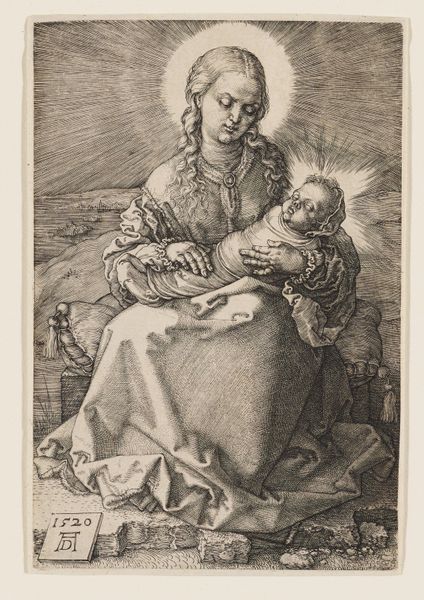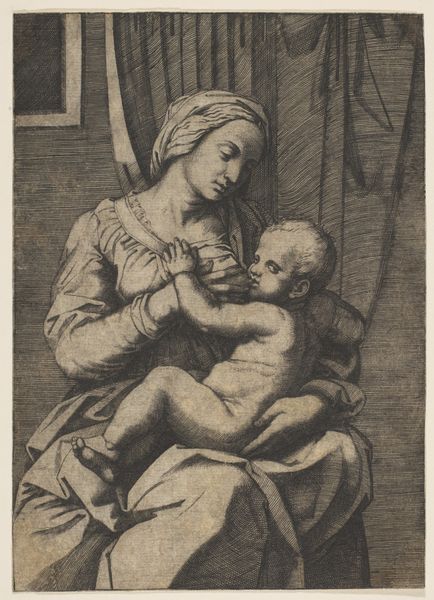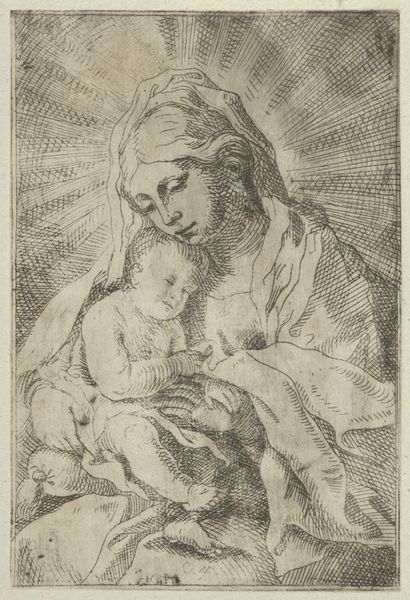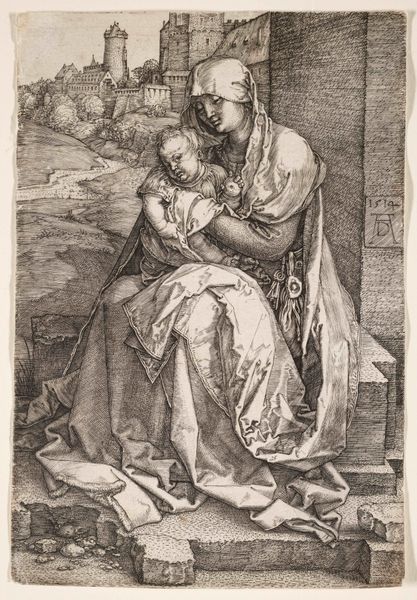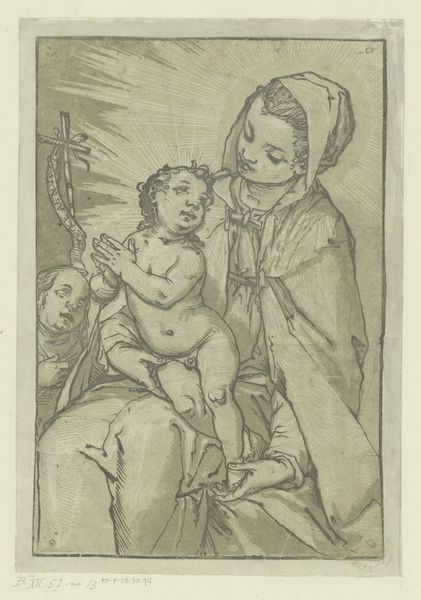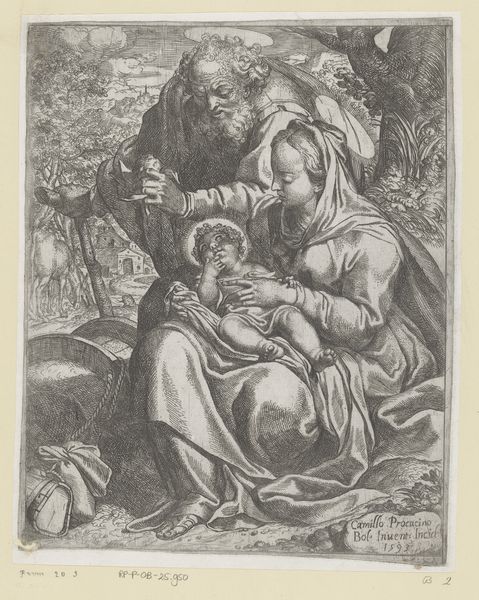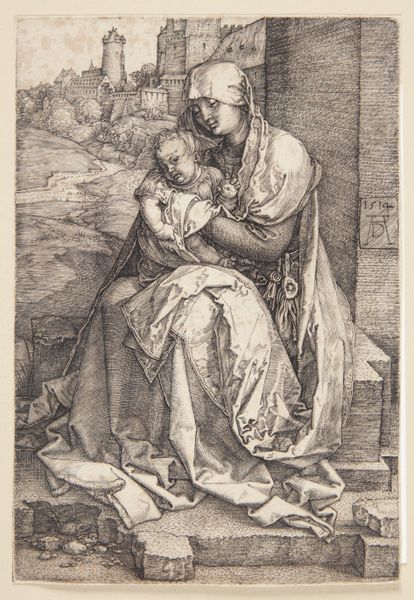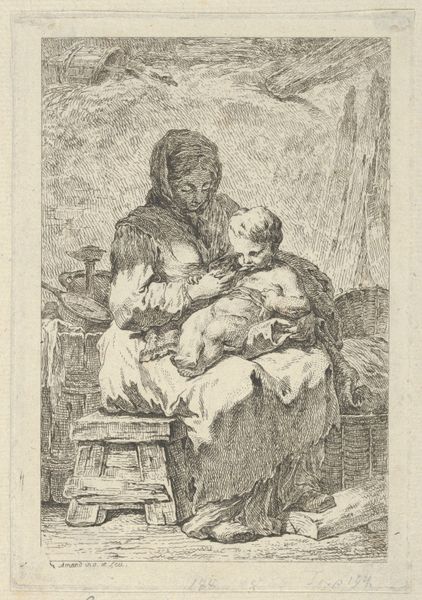
drawing, print, ink
#
portrait
#
drawing
# print
#
figuration
#
ink
#
pencil drawing
#
northern-renaissance
Dimensions: Sheet: 4 5/8 × 2 15/16 in. (11.8 × 7.4 cm)
Copyright: Public Domain
Editor: Here we have Albrecht Durer’s "The Virgin Nursing the Child," created in 1519 using ink as a print. The intense detail achieved in ink is amazing. I am curious about your reading of the composition, how do you interpret this work through its formal elements? Curator: Note the masterful control of line and form. Durer's use of hatching and cross-hatching creates a tonal range that suggests volume and depth, essential elements in understanding spatial relationships in visual arts. Observe the texture implied on the fabrics and the skin; what does this articulation communicate to you? Editor: I guess I can see how different forms communicate contrasting concepts; how the sharp dark lines of the cross-hatching and the circular patterns behind the two figures form the contrast that leads to the idea of foreground and background Curator: Precisely. Also, let’s explore the central composition; a symmetrical harmony in a relatively static yet intimate portrait. What effect does this formal choice have on the reading of subject? Editor: So because there's balance with no single overwhelming aspect of the drawing to guide the viewer in particular, and also the lack of dynamics due to both characters occupying relatively static postures the intimate feeling of nursing that's communicated in such manner. What would be its objective? Curator: Good. It removes excess of context for contemplation on its core meaning; through its balance and central theme of nurturing and intimacy in its symmetrical approach, the subject's presentation leads to its contemplation, as if a simple observation. How do we know is "The Virgin?" Are we biased? Editor: That’s an interesting point! Looking closely, the halo surrounding The Virgin alludes to just that, The Virgin Mary, the symbolism of Divinity Curator: Indeed. In conclusion, through Durer’s control of form, balance, symmetry and delicate textures this piece guides to the contemplation of the subject. It relies on the reading of light and shadows in combination with divine symbolisms to portray The Virgin Nursing The Child. Editor: I see, thank you for explaining all of that; it helped me grasp what makes a piece such as "The Virgin Nursing the Child" more meaningful through Durer’s technique.
Comments
No comments
Be the first to comment and join the conversation on the ultimate creative platform.
